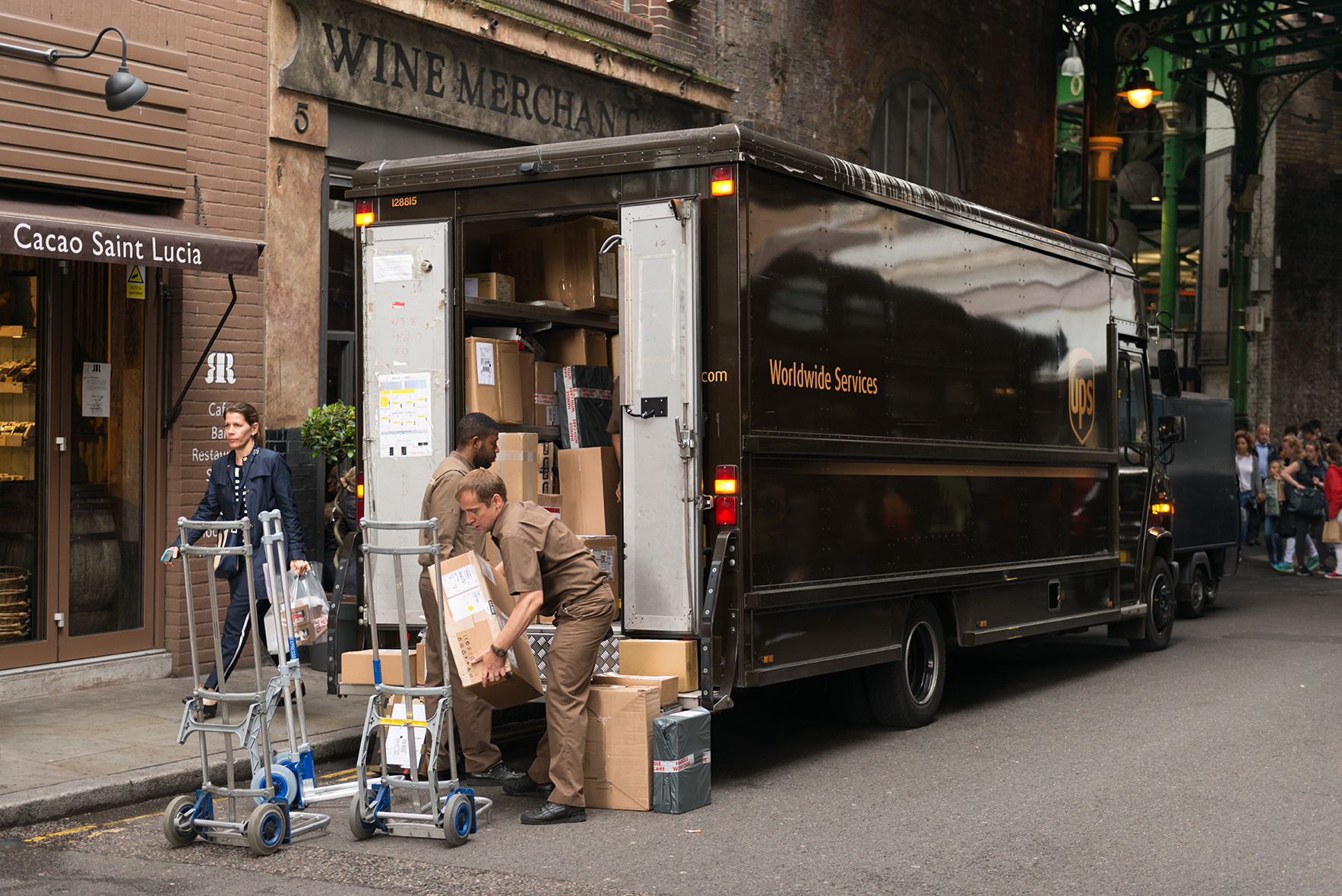UPS continues to see volume declines in its network impacting results, as it steps up automation and finds other ways to drive greater efficiency in order to offset the decline, which helped boost revenue per piece in the first quarter even with the volume falloff.
The company also remains confident of a settlement with the Teamsters union before the July 31 deadline, while working overtime to retain business and keeping a contingency plan at hand in the event of a walk-off. CEO Carol Tome attributed about 60% of the year-over-year volume decline to factors other than jittery shippers jumping to other carriers.
“Customers say, we’d like to ship with you, we’re just going to sit on the sidelines till you’re done,” Tome said of the Teamsters negotiations. “So we just need to get done. And we will.”
In the U.S., UPS reported, revenue fell 0.9% to $15 billion in Q1, and was down 6.8% in the international segment, in line with the steeper volume drop of 6.2%. Consolidated revenue per piece edged up from $13.26 to $13.74, with domestic gains offsetting international falloff.
Total revenue was down 6% to $22.93 billion, vs. an expected $22.01 billion from analysts polled by Refinitiv. Earnings per share were $2.20 vs. the consensus of $2.21, and net income declined 29% to $1.9 billion; record profits have been one of the Teamster’s main cudgels in demanding more pay. That was enough to send the stock lower and cause analysts to question overall economic health, as the major carrier is a bellwether of business activity.
“I’ve led three difficult times before and I’ve seen the power of making the right decisions and the pitfalls of making wrong decisions,” Tome told analysts in her opening remarks. “In uncertain market conditions, it’s easy to fall into the trap of managing the business for the short term. While we will control what we can control, we will also stay on strategy.”
Tome said the company’s 2023 outlook has been adjusted to be in the low end of the previously reported range for revenue and operating profit, due to “deceleration in U.S. retail sales growth, and certain non-U.S. markets remain challenged.” She specifically cited Asia in the company’s earnings release.
UPS’s total service plan, introduced last year to create a predictable on-time network, has proven beneficial as volume has fallen, Tome said, creating efficiency within a network designed to do so at higher levels.
“Our massive and highly complex network naturally generates efficiency when volume increases,” she said. “But when volume levels drop, historically, it’s been harder to generate productivity improvement. With the total service plan, we have driven productivity even with declining volume.”
UPS this month onboarded a “second large national retailer” to its delivery density program, Tome said, adding volume and increasing efficiency. Launched in 2022, the program uses technology from an unnamed partner to hold orders until more packages can be sent to a particular address, reducing stops. “It’s still early days of this initiative,” she said. “As we learn, we continue to adjust the match rate algorithm, and we are happy with the results.”
Tome said UPS has made “good progress” on supplemental agreements with the Teamsters union during negotiations which began Monday. She added the parties are aligned on weekend staffing and dealing with hot vehicles in the summer.
“While we expect to hear a great deal of noise during the negotiations, I remain confident that a win-win-win contract is very achievable, and that UPS and the Teamsters will reach agreement by the end of July,” she said.
Analysts keyed in on the fact that UPS saw incremental volume declines in Q1, from 3% to 5% to 7% month-to-month. They wondered if this may have been due to shippers diverting business as a hedge against a possible Teamsters walk-off Aug. 1. FedEx, naturally, has made a concerted effort to lure over shippers.
Tome responded by saying UPS volume has stabilized in April. She attributed 60% to 62% of the year-over-year decline to macro conditions and an ongoing step-down with Amazon, now representing about 11% of UPS packages.
She also said the company has dispatched 127 “high-impact executives” to more than 380 customers representing about a third of the company’s volume, to update them on negotiation progress and keep them in the fold.
In addition to a continency plan in the “unlikely event” of a Teamsters strike, Tome said she is confident that any business that utilizes other carrier options will quickly return to the fold once there’s a union settlement.
“It would be unreasonable to expect that we wouldn’t have any volume that has diverted,” she said. “We are going to win it back because they’ve told us they’re coming back. In fact, one customer just signed on the dotted line that they’re coming back once we have a handshake.”

